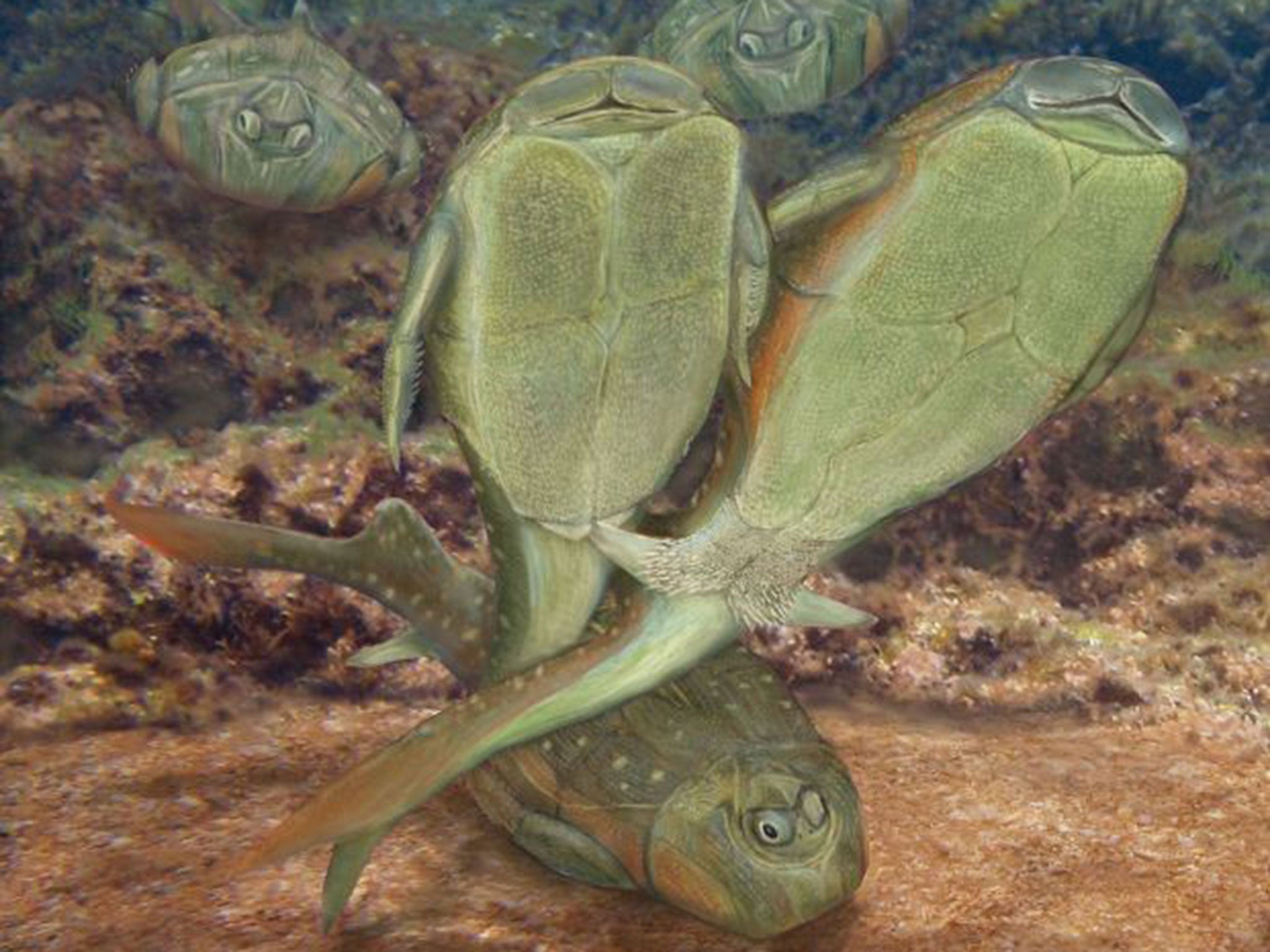The Independent's journalism is supported by our readers. When you purchase through links on our site, we may earn commission.
Ancient armoured fish first creatures to have sex
The prehistoric Microbrachius dicki copulated sideways in a Scottish lake

Your support helps us to tell the story
From reproductive rights to climate change to Big Tech, The Independent is on the ground when the story is developing. Whether it's investigating the financials of Elon Musk's pro-Trump PAC or producing our latest documentary, 'The A Word', which shines a light on the American women fighting for reproductive rights, we know how important it is to parse out the facts from the messaging.
At such a critical moment in US history, we need reporters on the ground. Your donation allows us to keep sending journalists to speak to both sides of the story.
The Independent is trusted by Americans across the entire political spectrum. And unlike many other quality news outlets, we choose not to lock Americans out of our reporting and analysis with paywalls. We believe quality journalism should be available to everyone, paid for by those who can afford it.
Your support makes all the difference.Two armoured fish dwelling in a Scottish lake were the first creatures to have sex, around 385 million years ago.
Scroll down for video
And forget missionary – this ancient couple copulated side-by-side, ensuring that the male could manoeuvre his large genitalia into just the right position.
Scientists have traced the history of vertebrate sexual intercourse back to a species of fish known as Microbrachius dicki. Microbrachius means “little arms” and refers to the genital limbs that locked male and female fish together when mating. And dicki means – that’s right, you guessed it.
The three-inch long placoderm (a prehistoric fish) is an early ancestor of humans that lived millions of years before fins evolved into legs.
A study of the creatures' fossils showed that in order to transfer sperm, males had grooved L-shaped claspers which were held in place by small paired bones on the female.
"We've solved this great mystery because they were there for mating, so that the male could position his claspers into the female genital area."
He added that the act of copulation was carried out sideways. "This enabled the males to manoeuvre their genital organs into the right position for mating,“ he said.
"With their arms interlocked, these fish looked more like they are square dancing the do-se-do rather than mating."
The discovery, published in the Nature journal implies that external fertilisation evolved from internal fertilisation involving sexual intercourse, and not the other way around. Most present-day bony fishes fertilise eggs outside their bodies.
The findings also highlight the importance of placoderms in vertebrate evolution.
Professor Lang said: “Placoderms were once thought to be a dead-end group with no live relatives, but recent studies show that our own evolution is deeply rooted in placoderms, and that many of the features we have, such as jaws, teeth and paired limbs, first originated with this group of fishes.
“Now, we reveal they gave us the intimate act of sexual intercourse as well.”
Additional reporting by PA
Join our commenting forum
Join thought-provoking conversations, follow other Independent readers and see their replies
Comments